
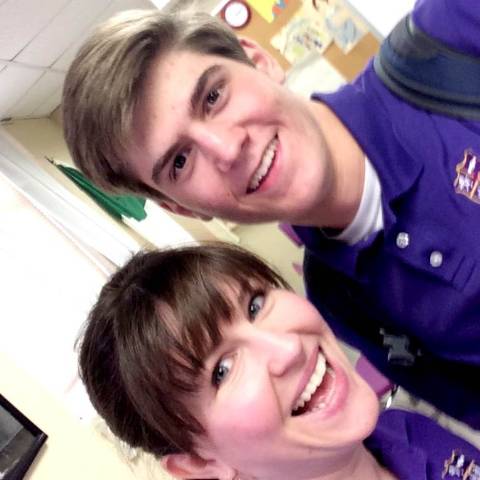
I looked past my khaki skirt and purple polo to my black-clad legs. Are the girls at Darlington wearing tights these days? Do these boots look weird with tights? Which is worse, exposing my legs or wearing the wrong thing? Yep, I was definitely living the high school experience, and I hadn’t even left my house yet.
It was the day I would shadow junior Hunter Manning from the time he sat down at the breakfast table to the time he took off after lacrosse practice. My goal was to better understand the Darlington experience from the most important point of view—that of our students. Here are my biggest takeaways from the day:
My experience of a school day doesn’t represent that of every student. For one thing, I find learning easy and don’t mind sitting still and listening (heck, I even like taking tests!), so I cannot truly feel some of our students’ biggest challenges. I couldn’t shed my identity for this experiment, so I embraced it by shadowing a student whose course load and school involvement are similar to what mine were, ahem, twenty years ago. In comparing the life of today’s high-achieving high school students with the one I remember from my own years at a college-prep independent school, I found that not a lot has changed. In some ways, that’s bad—school today is still modeled on the assembly lines of industry, as it has been for 100 years. On the other hand, good people are in our classrooms building relationships, responding to student needs, and offering thoughtful instruction. Do we in education want to offer a wider variety of learning experiences to our students? Of course—and we have many models for this if we look around us—but are we doing a lot of things really well? After a long, fun day as a student, I believe we are.
Many thanks to Hunter Manning for being a great sport, and to all his friends, classmates, and teachers for making me feel welcome. I had an awesome time!
Note: Beth Wilson is one of 18 administrators, teachers and staff members participating in Darlington's shadowing exercise to get a firsthand look at what the Darlington experience is really like for students of all ages.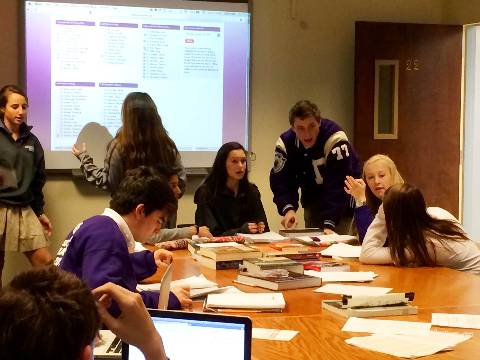 The morning started in Craig Schmidt's room, where many students congregated for office hours before advisory began.
The morning started in Craig Schmidt's room, where many students congregated for office hours before advisory began.
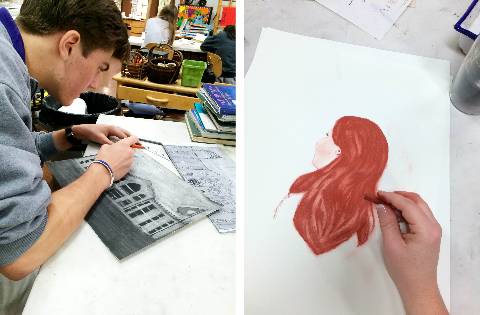 Hunter and his classmates worked on charcoal reductions in art class. Since they were finishing this multi-day project, I did a conte-crayon drawing, instead.
Hunter and his classmates worked on charcoal reductions in art class. Since they were finishing this multi-day project, I did a conte-crayon drawing, instead.
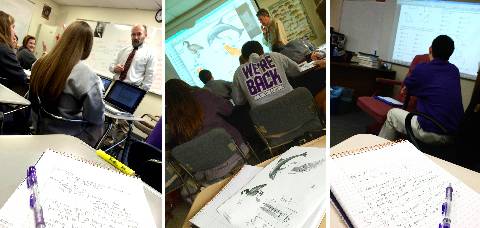 I took many notes throughout the day as I processed the purport of discussion in history, identified features of systems in biology, and prepared for the next day's test in pre-calculus.
I took many notes throughout the day as I processed the purport of discussion in history, identified features of systems in biology, and prepared for the next day's test in pre-calculus.
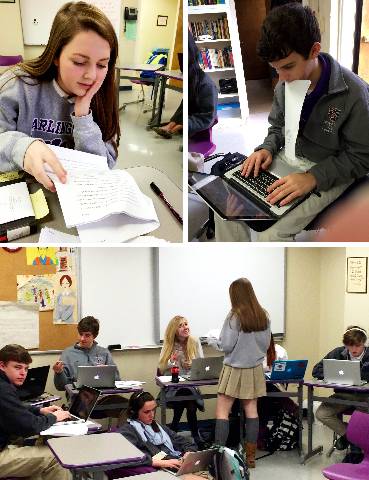 In my own class, students were giving peer feedback on their researched arguments, so I did the same!
In my own class, students were giving peer feedback on their researched arguments, so I did the same!